If you’re looking for a simple and quick board game, yet still one that is not completely brainless, then check out this list of 10 Best Filler Board Games in 2022.
Introduction to 10 Best Filler Board Games in 2022
Having an epic, several hours long board gaming experience spread across the whole of your table is definitely a memorable experience, particularly if the gameplay is equally epic. These big-box board games require plenty of preparation and input from every participant – and offer equally hefty prizes in return.
But we don’t always have the chance or wish to get them to the table. Sometimes we like to play something smaller, shorter, and simpler. There may be several reasons for that:
- Lack of time.
- We’re tired or not in the right mood.
- Lack of suitable players.
This is when so-called filler board games jump in. These are small-box board games with few components. This means that both the setup, rules, and learning process are short. The game can start minutes after you open the box and everyone will know what they’re doing from the get-go.
Games are normally over in 10-30 minutes and the gameplay is smooth and swift. You can squeeze in a play anytime you want.
On the other hand, the games picked for this list are not “dumbed down” – there is enough tactical and strategical depth to keep them attractive to more “serious” gamers.
If you click on an affiliate link, it will take you to the Amazon store. If you then buy something, I will earn a commission – I am a member of the Amazon Associates program, as well as others.
10. The Mind
Duration: 20 minutes
Player count: 2-4
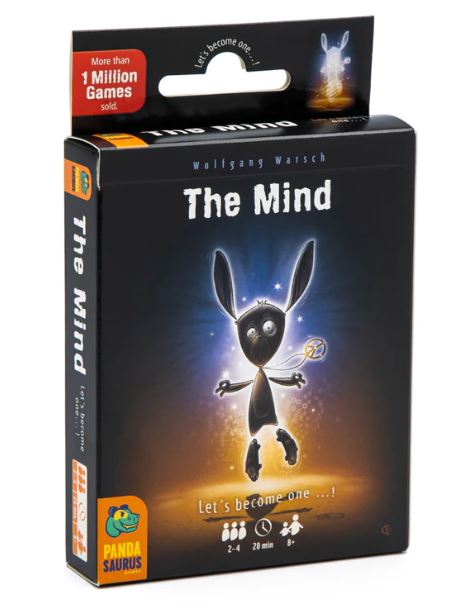
The Mind is a cooperative game, where the goal is to discard all your cards one by one onto a communal discard pile in ascending order.
This process has to be completed without any communication. The gameplay pans out as a staring contest, where you’re trying to determine who has the lowest card by waiting out and reading how others do (reading their mind, as the game title implies). And if you feel like you own the lowest card at the moment, discard it.
The game comes with various levels of difficulty and there are shuriken tokens (everyone discards their lowest card) and extra life awards to make things easier for you. The Mind is an unusual experience, best played with four players.
9. Port Royal
Duration: 20-50 minutes
Player count: 2-5
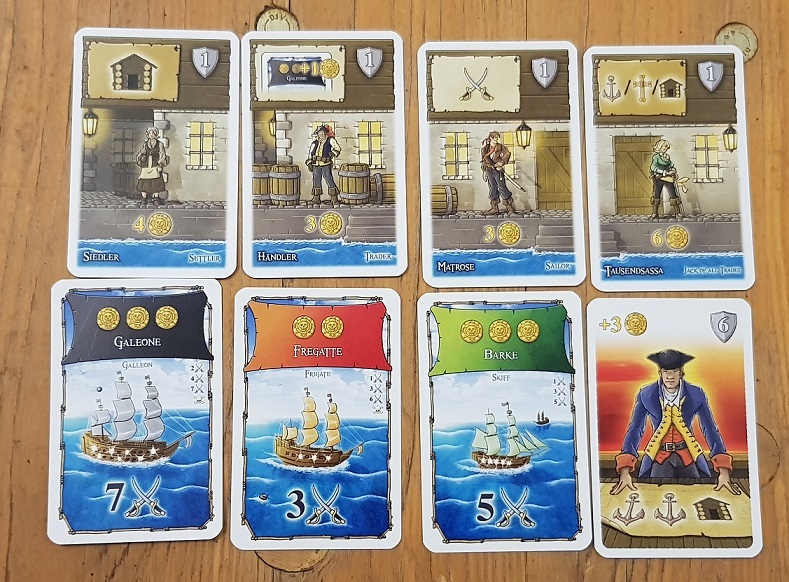
Most players would be surprised that the designer of this pirate-themed deck of cards, Alexander Pfister, is otherwise known for much meatier board games, such as the renowned Great Western Train or Maracaibo, among others.
But anyone who has played a fair amount of Port Royal will see that it contains distilled game mechanisms that you find in larger board games. Tableau-building, engine-building, set-collecting, push-your-luck, Port Royal has it all.
The gameplay is simple. You draw cards from the central deck and place them face up on the table. At any time you can stop and decide to take one (or sometimes more) and take it into your possession. But draw too many ship cards, and you can go bust …
5 Reasons Why Port Royal is a Perfect Filler Board Game
The push-your-luck element keeps the excitement level high at all times (just one more card and maybe I’ll get what I need), while the high variety of cards allows for different strategies to work. It scales great to all player counts, and there are expansions available, further increasing the variety of the deck.
8. Point Salad
Duration: 15-30 minutes
Player count: 2-6
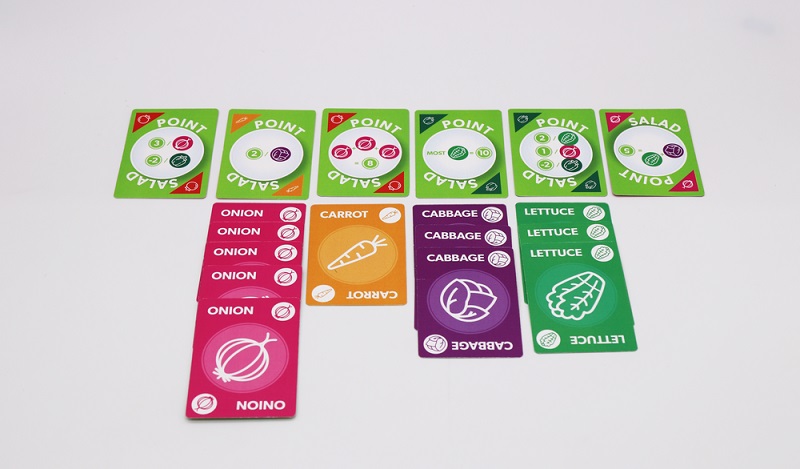
In board games, there are usually just a handful of ways how to score those all-important victory points. In Point Salad, there are over 100! (The term point salad is used in board gaming to describe a game that doesn’t have a few focused manners on how to score points, but has several equally powerful.)
The key to this is multi-use cards. Each card has a vegetable on one side and a scoring condition on the other and you decide which one to use when you draw from the central offer. The scoring conditions usually refer to sets of collected vegetables and there are also negative points.
This variety gives near-infinite replayability and you can craft your scoring strategy differently each time. Even if you aren’t successful, the game is over in 15 minutes, allowing you to try again and again. Point Salad plays up to six players, meaning there’s room for the whole family around this salad bowl!
7. 6 nimmt!
Duration: 45 minutes
Player count: 3-10, best around 5-6
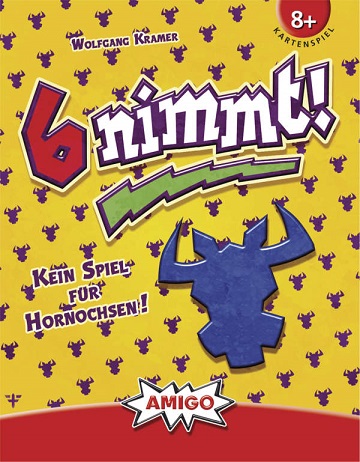
This legendary title from 1994 has received many editions and translations over the decades (known as Take 5, among other names). The deck consists of 104 cards numbered from 1 to 104 with each player receiving 10 cards.
On each turn, players simultaneously discard a card, which are then placed in rows in ascending order. If your card is the sixth in that row, you must take the entire row of cards, granting you a plethora of negative points.
6 Reasons Why 6 nimmt! is a Masterpiece
This archaically simple game mechanic (the teaching is less than 1 minute) allows for a lot of clever play: card counting, kill sniping, bluffing, and king-making being just a few of them. The dynamics change a lot with player count and the gameplay is significantly improved at larger player counts (5-10 players). Perfect for large groups!
6. Skull
Duration: 15-45 minutes
Player count: 3-6
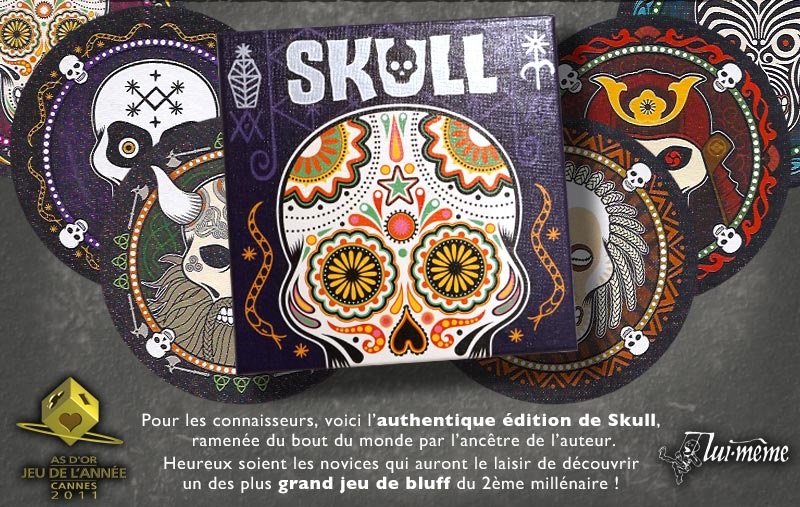
While all the games in this article use very few resources, Skull (or Skull & Roses, as it’s also known) takes the crown. Each player has four cards (3 roses and 1 skull) and a (score)board onto which he places them. If you know the rules you can substitute this with self-made components (a deck of cards) and play anywhere, anytime in a matter of minutes!
On your turn, you can either place one of your cards face down in front of you or you can start bidding. You bid how many cards you can turn face up (including yours) without stumbling upon a skull. If you succeed, you are halfway to the end victory. And if you fail, you lose one of your cards, making further plays more difficult for you.
This is enough to create an exciting mixture of card-counting, social deduction, and bluffing. Yes, bluffing is key to victory, and just like in poker, you should do it enough times to keep your opponents on their toes. But don’t get reckless, because bluffing every turn won’t get you anywhere. Well, at least there’s no fear of losing money.
5. No Thanks!
Duration: 20 minutes
Player count: 3-7
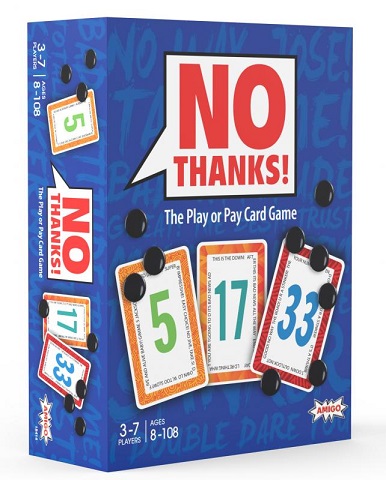
Another title that has hit mainstream publicity, No Thanks, has been initially published in Germany, but later translated into many different languages.
A card valued from 3 to 35 is turned face-up. You have the option to:
- pass and place one of your chips on it, or
- take the card and all the chips on it, revealing the next card.
The card’s value is also its end-game score, therefore careful risk vs. reward and managing your chips (while valuable during the game, they actually score negative points in the end) are keys to success. But what truly elevates No Thanks! to the next level are two twists:
- If you own a run of two or more consecutive cards, only the lowest is scored.
- Nine random cards are removed during the setup.
These two twists allow the players more freedom and ambiguity when pushing their luck, making the games much looser and more thrilling.
4. Sushi Go!
Duration: 15 minutes
Player count: 3-5
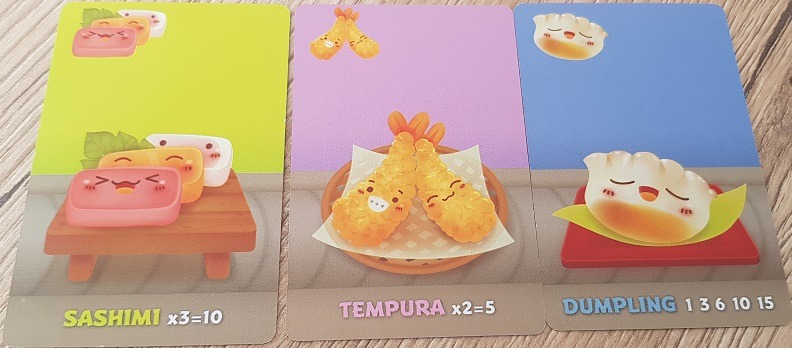
Take these cards, take one, and pass the rest to the next player. This is Sushi Go!, a basic card-drafting board game, inspired by sushi conveyor belts. (the cards fly by you just like dishes)
Picking your card makes a second part of the gameplay – an introduction to set collection. Tempura dishes score points when in pairs, Sushi rolls, score if you have more than the other players, Dumplings score exponentially more the more you have them, and yogurts only score at the very end (you have desserts at the end of the meal, after all).
Nothing too complicated and as such great as a gateway game for new players or even kids. I’ve played this one with my daughter since she was four and it was always a hit. If possible, try to go for Sushi Go Party! edition, which features extra components.
3. For Sale
Duration: 30 minutes
Player count: 3-6
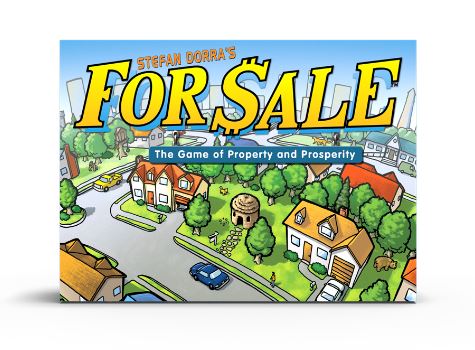
Buy low, sell high. For Sale is all about this basic economic principle. First published in 1997, its simple and solid mechanisms have stood the test of time.
You start the game with a bit of cash. As the various real estate is drawn from the deck (ranging from shacks all the way to mansions), you and other players will bid for them. There’s plenty of strategy even at this stage. Save your money for the big ones or spread yourself out a bit more. It also depends on what the others are doing as sometimes the deal will be just too good to pass.
In the second stage, the cheques are drawn and you can sell your houses for (preferably) big bucks. Again, different valued cheques exist and you must weigh carefully when to sell and when not to. Compared to the first stage, the second is shorter and more thrilling.
Anyone can learn For Sale in a matter of minutes, yet it still possesses interesting choices, that keep it relevant a quarter of a century after its initial release.
2. Just One
Duration: 20 minutes
Player count: 4-7
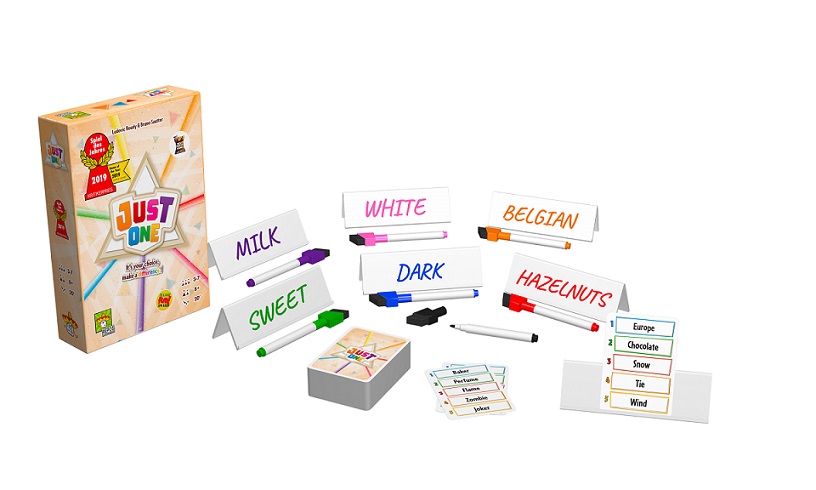
There are many word games on the market, yet few strike all the right chords. Yes, there are Codenames (which are great), but Just One smashes with its brilliance through simplicity.
It’s a cooperative game, where one of the players is the guesser and other players give him clues. After the card is drawn and a word chosen, the clue-givers will each write a clue about that word. But here lies the brilliance – they must work together without communicating – if there’s a duplicate (and thus obvious) clue, it’s discarded.
This means players must choose their clues carefully. Even if you think you found a perfect one, you better think twice that the player next to you isn’t thinking about the same clue. On the other hand, you want to make things easy for the guesser …
Just One creates a healthy amount of challenge and pressure on the guesser, yet the cooperative nature keeps things friendly and casual, focusing on player vs. player interaction (getting into each other’s heads). The game is great with larger groups (5+) and the only downside of Just One is that it’s language-dependent.
1. Love Letter
Duration: 20 minutes
Player count: 3-4
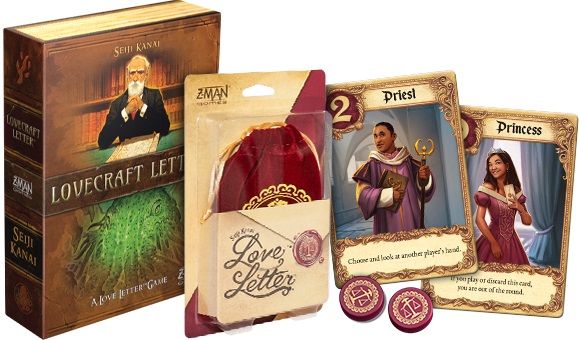
How do you make sure your love letter is delivered to your adored princess, hidden deep in her chambers? Well, according to this game, there are two ways. You can use one of the other court members to help you deliver it – or you can remove all of your rivals and have it delivered yourself.
Love Letter uses a very thin, but diverse deck of cards, comprised of different court members of various values and abilities. Each player starts with just one hand card. On your turn, you draw another card and then you decide which one of the two cards you will play and onto which player you’ll apply its effect.
Effects range from peeking at their card, comparing the remaining hand cards (with the owner of the less valuable card being eliminated), swapping cards, making your opponent discard his card and draw another (if he discards the Princess, he is out), trying to guess his card and make him discard it if you guess right, and so on. The winner of the round is the last one standing or the one with the highest card in his hand when the deck runs out.
Which Love Letter Board Game to Buy? – Review and Buyer’s Guide
The game is played for several rounds, and the rounds go by rapidly. Love Letter is a mix of counting cards, making educated guesses on what your opponents are holding, and using abilities wisely. The rules are easy to learn, and the character capabilities are intuitive, diverse, and just powerful enough.
Luck plays some part, but even if you’re knocked out early, the round will be over in a minute and you can play again. You know it’s going to be worth it – you might just deduct your opponent’s hand correctly next round!

Exactly!
Which part do you mean? 😀